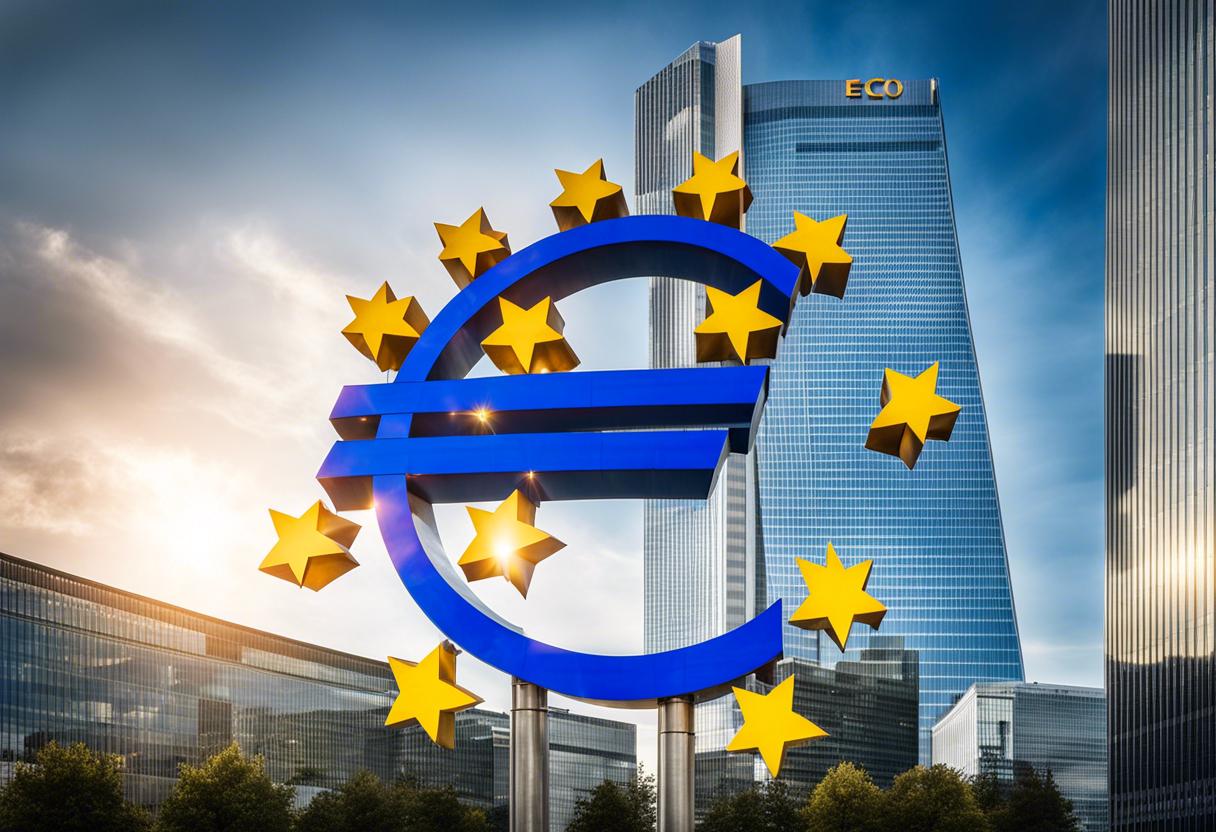Anticipation is high for an economic rejuvenation in the euro zone, as the European Central Bank (ECB) prepares to cut interest rates this Thursday for the first time in nearly half a decade. The extent of impact largely hinges on the decrease in borrowing expenses. Nonetheless, rapidly growing wages acting as a catalyst to persistent inflation could restrict the extent of rate reductions, experts predict.
Investors are certain of the impending rate cut and eagerly await guidance from ECB president, Christine Lagarde, on the future trajectory of monetary policy. The resumption of rate cuts by the bank will revitalise housing markets, spur business investment and promote consumer spending.
Last year witnessed the ECB levy its highest-ever deposit rate, set at 4 per cent. This measure was put in place to combat the largest inflation surge in recent history, which resulted in a stranglehold on economic growth.
Holger Schmieding, the chief economist at Berenberg, a German bank, underscores the significance of rate cuts. He highlights that while financial markets are braced for the expected cuts, the official announcement could capture the attention of households and businesses, thereby boosting market sentiment.
The euro zone economy revealed preliminary signs of a revival in Q1 of this year as the GDP of the bloc saw a growth of 0.3 per cent compared to the last quarter. This ended a decline in growth that had persisted for a year.
The growth was primarily a consequence of the ebbing impact of an inflation spike, triggered by the Russian onslaught on Ukraine, and revived global trade, according to Schmieding. Furthermore, he posits that the expectation of rate cuts was instrumental in reducing the cost of mortgages and corporate loans, aiding a recovery in housing and investment.
For instance, after the ECB began elevating rates in 2022, Germany saw a decline of 10% in house prices. However, there is a halt in the decline this year, following the reduction in 10-year mortgage rates from nearly 4 per cent last October to less than 3.2 per cent this year, as reported by mortgage broker Dr Klein.
Michael Neumann, the head of private clients at Dr Klein, noted that the attractive interest rates currently available have resulted in significant uptake in mortgage financing, which led to an observable boost in the market. The Dutch association of estate agents’ Marc van der Lee forecasted that escalating salaries, housing shortages, and reduced mortgage expenses will lead to a resurgence in Dutch house prices within the next quarter, possibly seeing them reach unprecedented highs.
Although the annual rise in prices sped up to 2.6 per cent in May from 2.4 per cent in the prior month, this has disrupted the consistent reduction in inflation from its apex beyond 10 per cent in 2022. According to the data released last week, the eurozone’s resilient job market is also keeping inflation elevated with bulk wage growth up to a record 4.7 per cent in Q1 coupled with a reduction in unemployment to a record low of 6.4 per cent in April.
Many economists believe that the recent robust data implies that the European Central Bank (ECB) will have to moderately increase both its forecasted inflation rate of 2.3 per cent and a GDP growth rate of 0.6 per cent for this year. Given the robust condition of the US economy signalling the Federal Reserve is unlikely to cut rates in the next few months – if at all in the remainder of the year – investors have reduced their speculations to less than three-quarter point cuts by the ECB.
The ECB usually only initiates such financial easing as a response to a crisis. For example, following the Lehman Brothers’ collapse in 2008 or Greece necessitating multiple bailouts in 2011. Thus, the timing of this week’s rate reduction will be unusual for the ECB. In fact, even the previous rate cut by ECB in September 2019 was attributed to weakening growth and inflation falling below the 2 per cent target.
Paul Hollingsworth, the lead European economist at BNP Paribas, stated that the economic condition is getting better, not worse, indicating that there is no immediate need for further rate cuts. This could result in fewer rate reductions this year, possibly one per quarter, making a July cut unlikely.
Key figures in the European Central Bank’s (ECB) governing council, responsible for setting rates, have suggested that a slow and steady approach to lowering rates is anticipated, predicting only two more rate reductions this year.
Philip Lane, the ECB’s chief economist, stated last month that rates might see a slight decrease throughout the year, yet they will continue to remain in what is considered ‘restrictive territory’, often assumed as staying above 3 per cent.
Dutch central bank leader, Klaas Knot, spoke at a London event last week, stating that based on the ECB’s recent predictions, their models suggest that ‘the best policy would align with about three to four rate decreases’ by the end of the year.
In order to achieve the ECB’s 2 per cent inflation target by the following summer, the bank is reliant on a few conditions: slower wage growth, increased worker productivity, and reduced business profit margins.
However, if these conditions do not occur and inflation remains high, Hollingsworth warned that the rate setters may need to reconsider their strategy after the initial few reductions.
Given the uncertainty surrounding the economic forecast, it’s widely believed that Lagarde will avoid making predictions about the likely policy direction. This strategy allows the bank to maintain the highest degree of flexibility regarding rate cuts for as long as necessary. – Copyright The Financial Times Limited 2024

